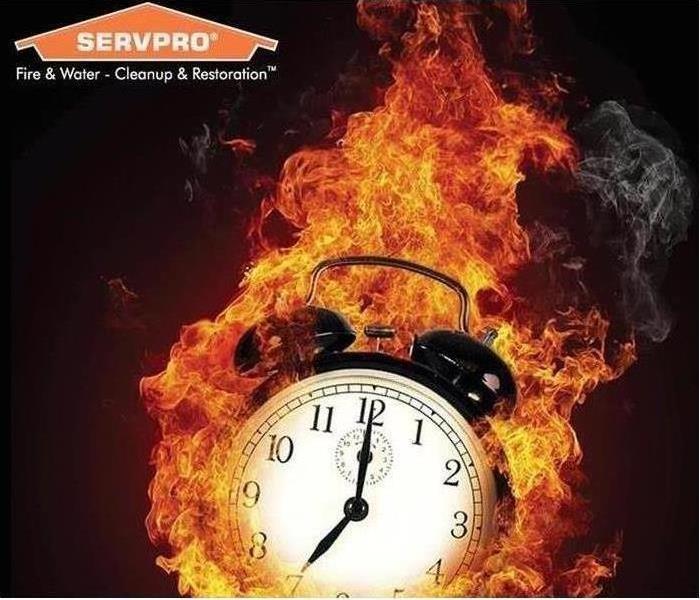FIRES IN WINTER
12/7/2018 (Permalink)
As the temperature has begun to drop we are seeing an uptick in the number of residential fires. 890 people die in winter home fires each year. $2 billion in property loss occurs each year from winter home fires. Winter home fires account for only 8 percent of the total number of fires in the U.S., but result in 30 percent of all fire deaths.
Winter brings several potential hazards into the home. Cooking is the leading cause of all winter home fires. Holiday decorations like faulty lights, dry Christmas trees, and candles are also a major cause. The top three days of the year for candle fires are Christmas, New Year’s Day and New Year’s Eve.
Faulty and improperly utilized alternative heating methods such as space heaters, fireplaces, and wood burning stoves also contribute not only to fire risk but carbon monoxide risk as well. Heating equipment is involved in one of every six reported home fires, and one in every five home fire deaths. Heating equipment is also a major source of carbon monoxide and winter months are when carbon monoxide incidents are more common.
Here are a few tips that you can share with your policy holders:
- Have your fireplace, heating vents and dryer vents inspected and cleaned by a professional every year.
- If you use your fireplace, make sure you clean after every use. Dispose of ashes correctly by placing them in a metal can at least ten feet from the house.
- Keep anything that can burn at least three feet from any heat source like fireplaces, wood stoves, radiators, or space heaters
- Plug only one heat-producing appliance (such as a space heater) into an electrical outlet at a time.
- If portable generators are needed, keep them outside, away from windows and as far away as possible from your home. Make sure someone is home to supervise.
- Install and test carbon monoxide alarms at least once a month.
- Keep your Christmas tree watered and dispose of it when it has become too dry. Nearly 40% of Christmas tree fires occur in January.
Here is a link to a great source of information https://www.nfpa.org/Public-Education/By-topic/Seasonal-fires/Put-A-Freeze-on-Winter-Fires
Please be safe and remember that if a problem does arrive, SERVPRO of La Grange Park / North Riverside is there 24/7/365 to help and make it "Like it never even happened."
We have a continuing education class coming up February 13. It is called Understanding Mold in the Restoration Industry and is going to be a great one. I have attached a flyer with more information. If you have a need for Ethics credit, please reach out to me as we are in the process of scheduling another class.
Finally, one request. If you have had a good experience with SERVPRO of Arlington Heights/Prospect Heights or SERVPRO of LaGrange Park/North Riverside please head over to our Yelp page or Google and give us a review. We truly appreciate everything you have done to help us grow!
https://twitter.com/SPArlProHeights https://www.facebook.com/SPArlingtonHtsProspectHts/ https://www.facebook.com/SPLagrangePKNRiverside/






 24/7 Emergency Service
24/7 Emergency Service
